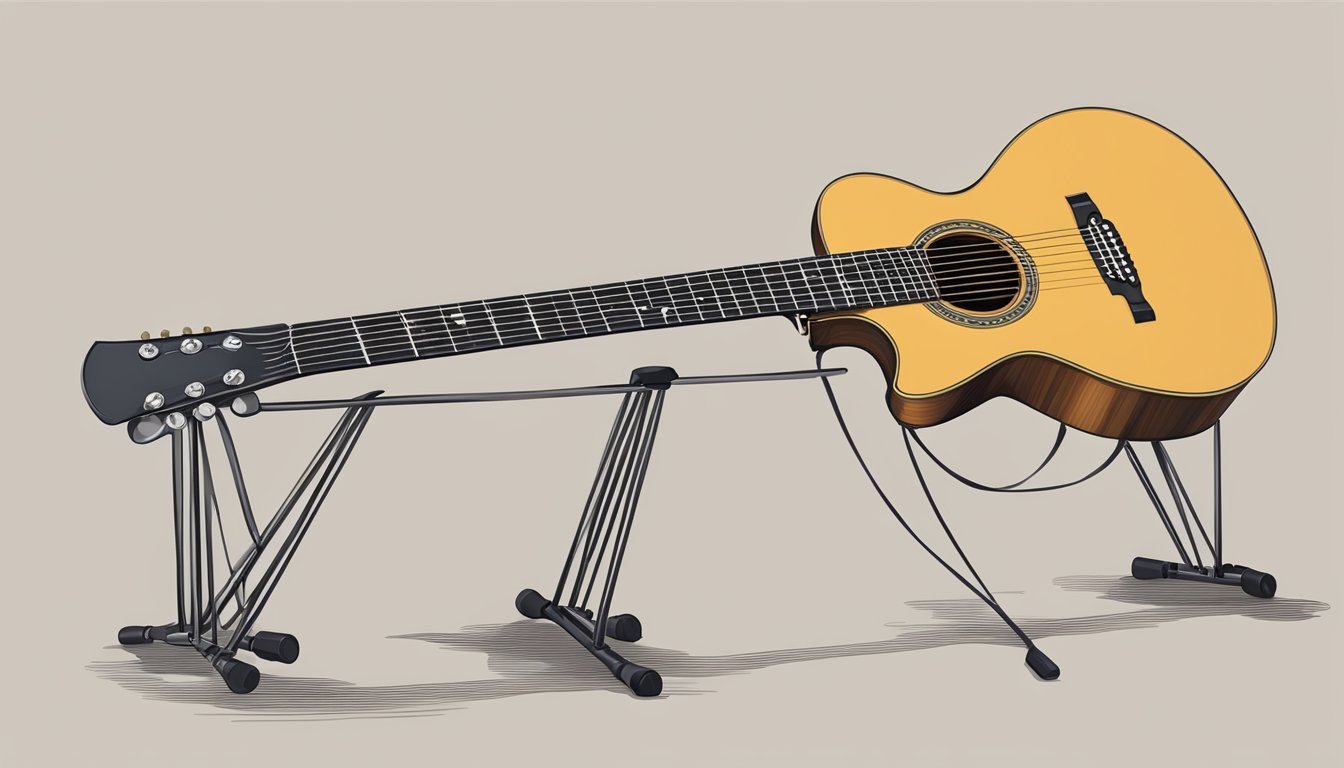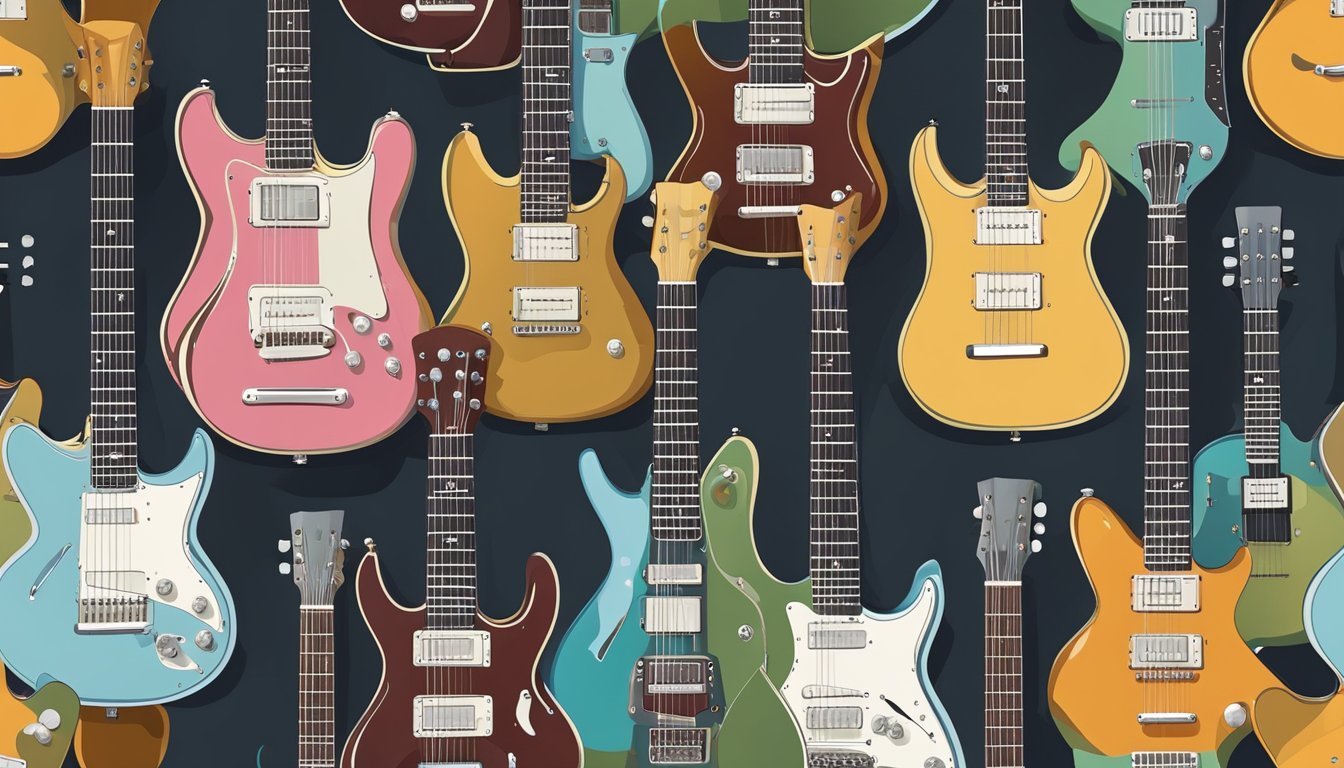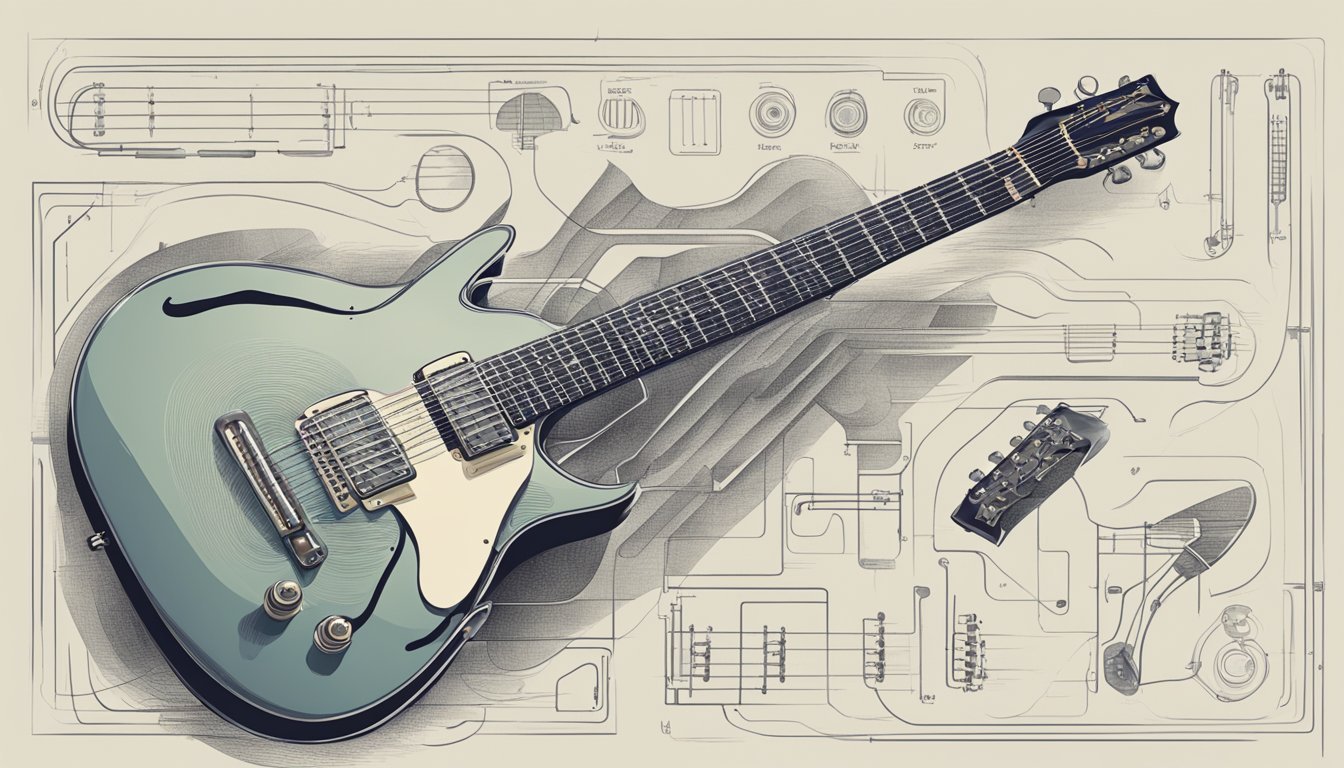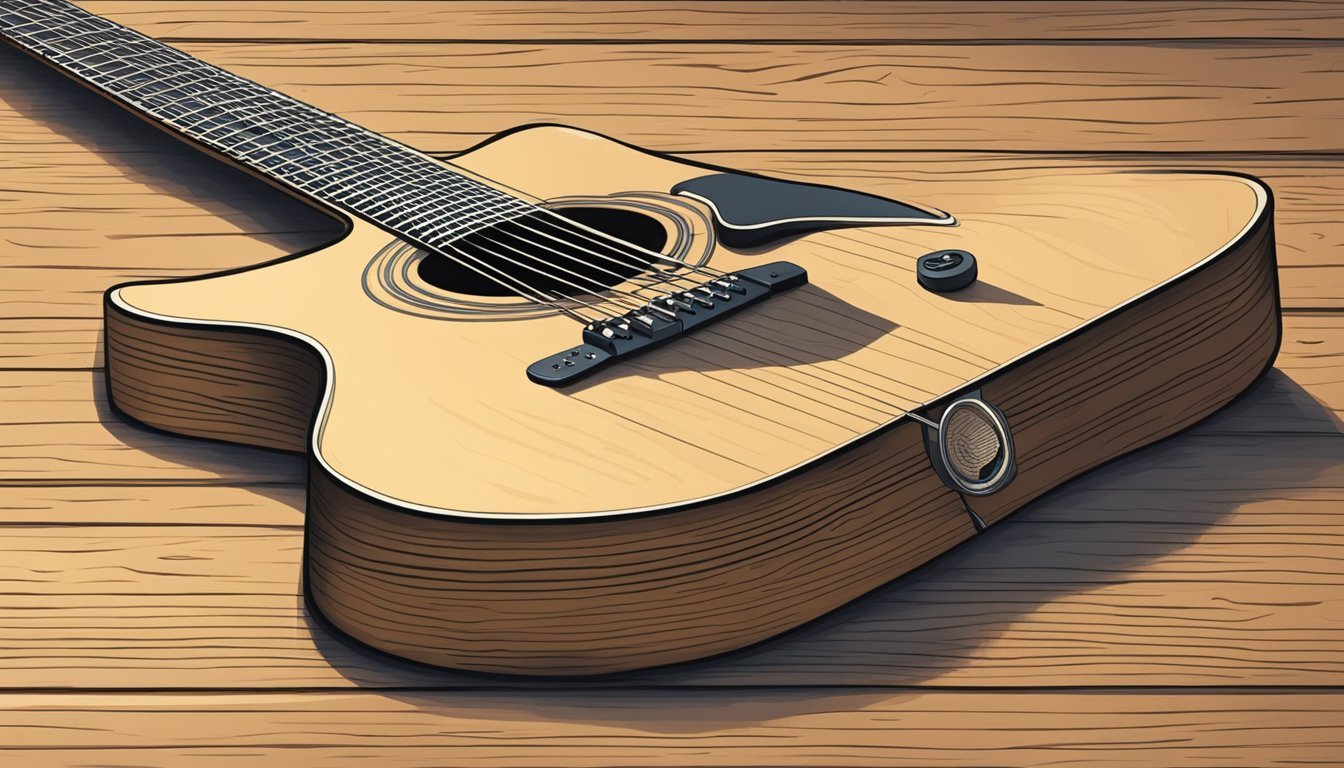When you think about a guitar, the first thing that often comes to mind is its strings. Most standard guitars have six strings, but there are many variations.
Understanding how many strings are on different types of guitars can help you choose the right instrument for your playing style.

Guitar strings directly influence your sound and the techniques you can use.
From six-string acoustic guitars to specialized bass and extended range instruments, each configuration offers unique benefits for guitar players.
Knowing the options available lets you explore and expand your musical creativity.
Whether you’re a beginner or a seasoned musician, the number of strings on your guitar can shape your playing experience.
Let’s dive into the details of guitar strings and what they mean for your music.
Key Takeaways
- Most guitars you encounter will have six strings.
- Extended range guitars can have up to 14 strings or more.
- The type of strings you choose affects your sound and playing style.
The Basics of Guitar String Anatomy

Guitar strings are essential to producing sound, and their anatomy plays a big role in how your guitar performs.
Understanding string materials and gauges can help you choose the right strings for your acoustic or electric guitar.
String Materials and Types
Guitar strings come in various materials, each delivering a different sound and feel.
-
Nylon Strings: Often used on classical guitars, nylon strings provide a warm tone and are softer on your fingers. They’re great for fingerstyle playing.
-
Steel Strings: Common on acoustic and electric guitars, steel strings produce a bright, punchy sound. They can be louder than nylon and are ideal for strumming and flatpicking.
-
Bronze Strings: These have a bright tone and are popular for acoustic guitars. They contain copper and tin, which enhances their brightness but can wear out faster.
-
Coated Strings: Available in both nylon and steel, coated strings resist dirt and moisture. This feature helps them stay bright longer, making them a good choice for players who want durability.
Understanding String Gauges
String gauge refers to the thickness of the strings, impacting playability and tone.
-
Light gauge: These strings are thinner and easier to play. They’re perfect for beginners and fingerstyle players who desire a softer touch.
-
Medium gauge: A good middle ground, medium strings offer a balanced tone and are versatile for various styles.
-
Heavy gauge: Thicker strings produce a fuller sound with more volume. They can be harder to play, so they’re often favored by more experienced players who enjoy heavy strumming or tuning down.
Choosing the right gauge enhances your playing experience.
Consider your preferences and the type of guitar you have.
Standard Guitar Tunings
When you start playing the guitar, understanding standard tunings is key.
Most guitarists use EADGBE tuning, which refers to the pitches of the open strings.
This tuning helps you play a variety of songs easily and is the foundation for many playing styles.
Tuning the Six-String Guitar
Your six-string guitar has strings tuned from the lowest to highest as follows: low E, A, D, G, B, and high E. Each string is essential for creating chords and melodies.
- Low E String: The thickest string, tuned to the note E.
- A String: This is the second thickest, tuned to A.
- D String: Tuned to D, it’s great for forming major chords.
- G String: This string is tuned to G, helpful for many common chord shapes.
- B String: Tuned to B, this string plays a crucial role in higher chords.
- High E String: This is the thinnest string, tuned to E, which gives you those bright sounds.
You can use a clip-on tuner or an app to help with tuning your guitar accurately.
Making sure each string is in tune ensures your music sounds right.
Alternate Tunings and Their Uses
While EADGBE is the standard, there are many alternate tunings to explore.
These tunings change the notes of the open strings, creating unique sounds.
Here are a few examples:
- Drop D Tuning: The low E string is tuned down to D. This gives a heavier sound, perfect for rock music.
- Open G Tuning: In this tuning, you get a G major chord by playing all open strings. It’s great for slide guitar.
- DADGAD Tuning: This one is popular for folk and fingerstyle playing. It adds richness to your music.
Experimenting with alternate tunings can help you find new ways to express your musical style.
They can make playing certain songs easier and more enjoyable.
Extended Range and Exotic Guitars
If you’re curious about guitars that go beyond the standard six strings, you’re looking at an exciting world of extended range and exotic guitars.
These instruments offer unique sounds and a variety of styles that can enhance your music.
Seven and Eight-String Guitars
A seven-string guitar usually has an extra low B string, which deepens your sound.
This feature is popular in genres like metal and progressive rock.
The extra string allows for more complex chords and riffs, giving you greater musical flexibility.
The eight-string guitar adds yet another layer, typically including both a low F# string and higher notes.
This expands your range even more.
Players appreciate the rich tones and heavier sounds that come with the extra strings.
You may find yourself inspired to explore new chords and melody possibilities.
As you delve deeper into the world of the eight-string guitar, you’ll discover that it not only offers more versatility but also prompts questions about its structure, such as how many frets does a guitar have.
With the added range of notes, you can experiment with different scales and harmonies that were previously out of reach.
This encourages creativity and allows musicians to push the boundaries of their playing, leading to unique compositions and styles.
Beyond Eight Strings
Once you go beyond eight strings, you enter an even more specialized territory.
The nine-string guitar offers a unique blend of low-end depth and higher note possibilities.
Musicians often use it for complex arrangements and intricate solos.
On the more exotic side, you have instruments like the twelve-string guitar, which features pairs of strings for a rich, shimmering tone.
Guitars like the harp guitar and gypsy guitar offer yet another flair, ideal for specific genres.
Multi-neck guitars and double-neck guitars also take versatility to new heights by allowing you to switch between different tunings and string configurations effortlessly.
Guitar Strings and Playing Techniques

Guitar strings play a huge role in how you express yourself through music.
The way you pick or strum those strings affects your sound.
Different techniques can help you explore various styles and genres.
Picking and Fingerpicking
When you play guitar, how you touch the strings matters. Picking usually involves using a pick or plectrum.
This method is common for strumming chords or playing fast solos.
It brings out clear, punchy notes that fit rock or pop music well.
Fingerpicking, on the other hand, uses your fingers to pluck the strings directly.
This style is great for creating beautiful melodies and intricate patterns.
Classic guitar music often relies on fingerpicking because it adds a gentle, resonant sound.
Genres and String Sounds
The type of strings you use can also change your sound.
For example, thicker strings tend to produce a deeper tone.
This is often what you hear in djent music, which requires heavy distortion and low tunings.
On a classic guitar, lighter strings may be used to create a softer, more resonant sound.
Different genres benefit from different string setups.
For instance, bass guitar string names refer to the four strings tuned lower than standard guitar, adding depth in genres like jazz and blues.
Understanding the order of guitar strings—E, A, D, G, B, and E—helps you play across genres, whether you’re strumming a chord in folk or rocking out in metal.
Adjusting your techniques can really cater to the musical style you want to express.
Frequently Asked Questions

You might have some common questions about the number of strings on guitars.
Let’s dive into some specific queries that often come up regarding string count and guitar types.
Do electric guitars have a different number of strings than acoustic guitars?
Most electric and acoustic guitars typically have six strings.
However, some electric guitars can feature more strings, like seven or eight, allowing for different musical styles and techniques.
The basics remain the same, but options vary.
Is it possible for a guitar to have more than 6 strings?
Yes, many guitars have more than six strings.
You can find guitars with seven, eight, or even twelve strings.
Each type brings unique sounds and playing experiences, catering to various music genres.
Can you explain the difference between a 6-string and a 12-string guitar?
A 12-string guitar has pairs of strings for each note, which creates a fuller, richer sound.
In contrast, a 6-string guitar has only one string per note.
Many players enjoy the fuller harmony from a 12-string, but it can be harder to play.
What’s up with guitars having 7 or 8 strings?
Guitars with seven or eight strings are commonly used in genres like metal and jazz.
The extra strings expand musical possibilities and allow for more complex chords and melodies.
Players often find these guitars add depth to their sound.
How do the number of strings vary across different types of guitars?
Different types of guitars, like classical, bass, or resonator guitars, vary in string count.
For instance, bass guitars usually have four strings, while some classical guitars can have six.
Each type has its own purpose and style.
Does the guitar family include instruments with less than 6 strings?
Yes, the guitar family includes instruments like the ukulele, which typically has four strings.
Other types, like certain folk instruments, may also have fewer strings.
These variations offer different sounds and playing techniques.

